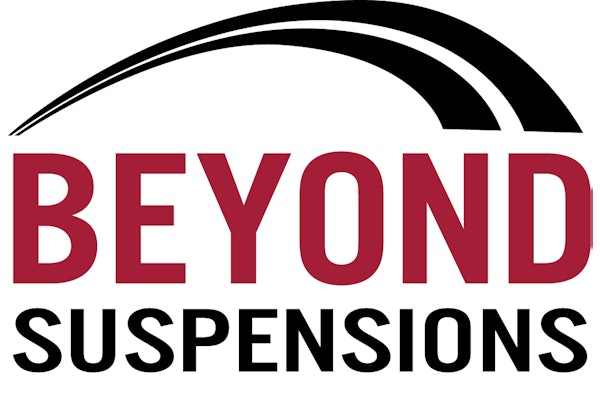Distributor Cash Flow Is A Major Determinate of Growth
Count this as a lesson everyone knows, but a random reminder won’t hurt anyone. At its simplest, cash flow management means delaying outlays of cash as long as possible while encouraging anyone who owes you money to pay it as rapidly as possible.
Prepare cash flow projections for next year, next quarter and, if you’re on shaky ground, next week. Understand that cash flow plans are not glimpses into the future. They’re educated guesses that balance a number of factors, including your customers’ payment histories, your own thoroughness at identifying upcoming expenditures, and your vendors’ patience.
Watch out for assuming without justification that receivables will continue coming in at the same rate they have recently, that payables can be extended as far as they have in the past, that you have included expenses such as capital improvements, loan interest and principal payments, and that you have accounted for seasonal sales fluctuations.
Start your cash flow projection by adding cash on hand at the beginning of the period with other cash to be received from various sources. In the process, you will wind up gathering information from salespeople, service representatives, credit & collections and your finance department.
In all cases, you’ll be asking the same question: How much cash in the form of customer payments, interest earnings, service fees, partial collections of bad debts, and other sources are we going to get in, and when?
The second part of making accurate cash flow projections is detailed knowledge of amounts and dates of upcoming cash outlays. That means not only knowing when each penny will be spent, but on what. Have a line item on your projection for every significant outlay.
Improving Receivables
The basic idea is to improve the speed with which you turn materials and supplies into products, inventory into receivables and receivables into cash. Here are specific ideas for doing this:
- Offer discounts to customers who pay their bills rapidly.
- Ask customers to make deposit payments at the time orders are taken.
- Require credit checks on all new non-cash customers.
- Get rid of old, outdated inventory for whatever you can get.
- Issue invoices promptly and follow up immediately if payments are slow
- Track accounts receivable to identify and avoid slow-paying customers.
- Institute a policy of cash on delivery (c.o.d.) as an alternative to refusing to do business with slow-paying customers.
Managing Payables
Top-line sales growth can conceal a lot of problems-sometimes too well. Don’t be lulled into complacency by simply expanding sales.
Any time and any place you see expenses growing faster than sales, examine costs carefully to find places to cut or control them. Here are some more tips for using cash wisely:
- Take full advantage of creditor payment terms. If a payment is due in 30 days, don’t pay it in 15 days.
- Use electronic funds transfer to make payments on the last day they are due. You will remain current with suppliers while retaining use of your funds.
- Communicate with your suppliers so they know your financial situation. If you ever need to delay a payment, you’ll need their trust and understanding.
- Carefully consider vendors’ offers of discounts for earlier payments. These can amount to expensive loans to your suppliers, or they may provide you with a change to reduce overall costs.
- Don’t always focus on the lowest price when choosing suppliers. Sometimes more flexible payment terms can improve your cash flow more than a bargain price.
Surviving Shortfalls
Sooner or later, you may find yourself in a situation where you lack the cash to pay your bills. This doesn’t mean you’re a failure as a businessperson-you’re a normal entrepreneur who can’t perfectly predict the future.
The key to managing cash shortfalls is to become aware of the problem as early and as accurately as possible. Banks are wary of borrowers who have to have money today. They’d much prefer lending to you before you need it, preferably months before.
If you assume from the beginning that you will someday be short on cash, you can arrange for a line of credit at your bank. This allows you to borrow money up to a preset limit any time you need it. Since it’s far easier to borrow when you don’t need it, arranging a credit line before you are short is vital.
If bankers won’t help, turn next to your suppliers. These people are more interested in keeping you going than a banker, and they probably know more about your business. You can often get extended terms from suppliers that amount to a hefty, low-cost loan just by asking. That’s especially true if you’ve been a good customer in the past and kept them informed about your financial situation.
Consider using factors. These are financial service businesses that can pay you today for receivables you may not otherwise be able to collect on for weeks or months. You’ll receive as much as 15 percent less than you would otherwise, since factors demand a discount, but you’ll eliminate the hassle of collecting and be able to fund current operations without borrowing.
You may be able to raise cash by selling and leasing back assets such as machinery, equipment, computers, phone systems and even office furniture. Leasing companies may be willing to perform the transactions. It’s not cheap, however, and you could lose your assets if you miss lease payments.
Choose the bills you’ll pay carefully. Don’t just pay the smallest ones and let the rest slide. Make payroll first-unpaid employees will soon be ex-employees. Pay crucial suppliers next. Ask the rest if you can skip a payment or make a partial payment.
Learning to Think Like the Banker
It’s amazing how many times business managers will come up with something they’re sure is “really great.” More amazing is the lack of concern for the financing aspects of these ‘can’t miss’ winners. The promise of financial return can make visionary people blind, or at least myopic, to visible realities.
‘Five C’s of Credit’
Character: When all else fails character is all that remains to help you get repaid.
Capacity: Borrower has the resources to repay the loan and guarantor has the appropriate assets to support the loan.
Conditions: During the life cycle of any loan, conditions will always change. Business, economic, legal and political conditions must be understood.
Capital: Borrower and guarantor should have a suitable margin for error. A lender never wants to be a quasi equity investor… especially accidentally.
Collateral: Lending decisions are not driven solely by collateral, but collateral must be appropriate.
Bill Wade is a partner at Wade & Partners and a heavy-duty aftermarket veteran. He is the author of Aftermarket Innovations. He can be reached at [email protected].










